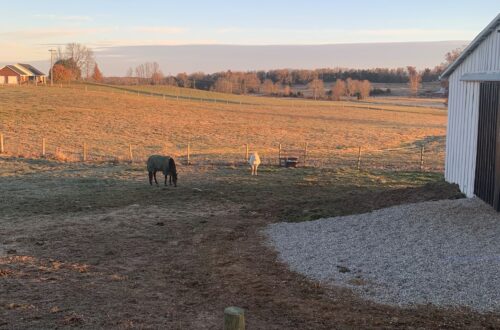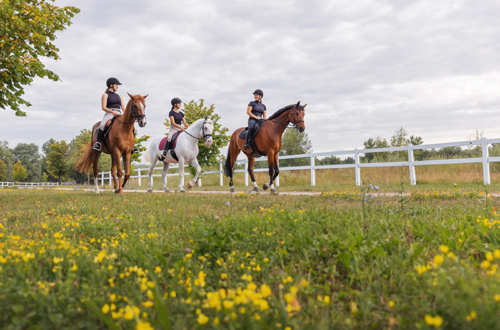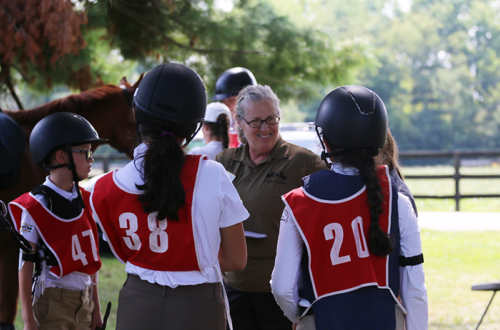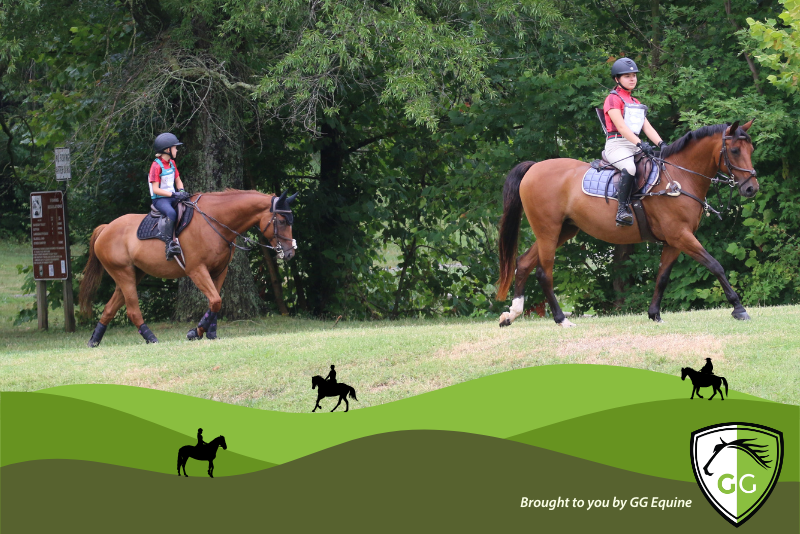
From Unfit to Fit: Basic Conditioning for the Riding Horse
By Meg Finn, USPC Instruction Department; Brought to you by GG Equine
Whether you’re bringing your horse back into work after an injury, preparing him for competition, or legging him up after some time off, conditioning plays an important role in keeping our horses happy and healthy.
Conditioning can be broken down into three basic elements: conditioning, training, and feeding.
Conditioning is the actual fitness work used to improve your horse’s flexibility, endurance, and strength. Think of your horse as a human athlete. A soccer player runs, lifts weights, and stretches, or uses yoga, to condition.
Training is the educational component. This prepares the horse for a specific discipline or purpose. Training develops muscle control and mental focus by presenting a task in a repetitive, systematic, and educational manner, just as a soccer player runs through passing, turning, or shooting drills.
Feeding is the final component, providing your horse with a balanced diet appropriate for his weight, condition, and workload. A balanced diet needs to meet his basic requirements for energy (calories), protein (for building muscles), vitamins, and minerals at the level of exercise he is working at—the same things required for a human athlete.
Create a Conditioning Plan
To create a conditioning plan appropriate for your horse, first consider his age, breed, current level of fitness, conditioning history, as well as any injuries or soundness concerns. A horse that is not already ridden for an hour, three or more times per week, should be considered unfit. A well-conditioned, fit horse that has had time off will take less time to condition than one that has had more than a year off or one who has never been conditioned. Bringing an unfit, though otherwise healthy, horse in to shape for ordinary riding will take six to eight weeks.
Week 1: Walk Work
If you’re working with an unfit horse, it’s important to start from the very beginning to gradually build muscle and to strengthen his tendons, ligaments, bones, heart, and lungs. Start with the walk. An active, forward-moving walk allows your horse to use his muscles while being less likely to make him sore than trotting or cantering would. Ride your horse four to six days per week, with at least one day off, starting with 20 minutes of work at the walk each day for a week. Add five to 10 minutes each day until you’re riding for at least 40 minutes.

Week 2: Trot Time
After a week of walking, you’re ready to add in the trot. Introduce the trot work gradually, starting with one minute, working up to three-minute sets, allowing your horse short walk breaks to catch his breath. Begin and end each ride with 15 minutes of walk, allowing your horse time to properly warm up and cool out.
Week 3: Incorporate the Canter
By the third week, you can begin to add in the canter the same way you added in your trot work. Slowly increase the amount of canter, with walk breaks in between, until you reach five minutes of canter in both directions. Each week should build upon each other, with gradual increases.
Continued Conditioning
Once you’ve established a basic base of fitness, and you’re riding your horse consistently at all three gaits, you can focus on diversifying the types of work you incorporate into your conditioning routine. These might include long, slow distance work, such as trot sets, hills work, interval training, or galloping. The type and frequency of conditioning work will vary depending on your end goal. As your horse gains strength and builds endurance, you can add in lateral work, collection, and other training elements.
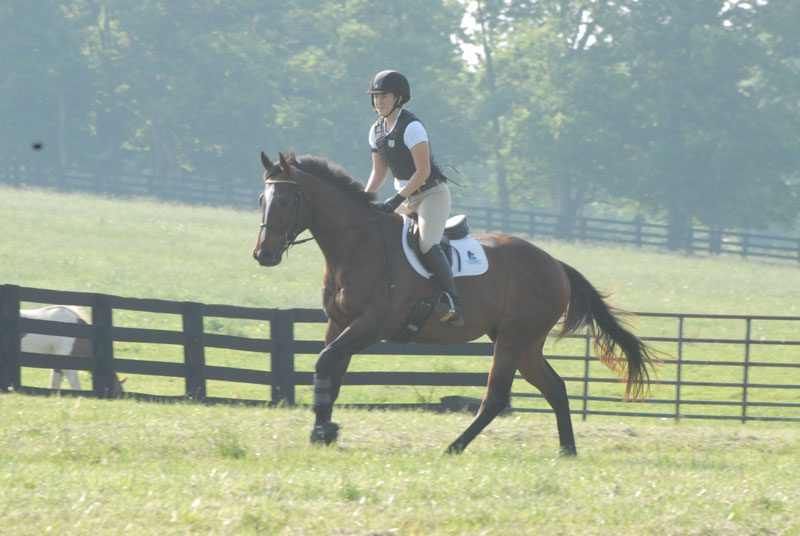
Feeding for Fitness
The final element of your conditioning program to bring your unfit horse into shape for riding is feeding. Just as we have different metabolic rates, so do our horses. Your chubby pony living out on pasture may require a grazing muzzle to remain at a healthy weight, while a stabled horse without access to grazing may require a filled hay net 24/7. As your horse’s work increases, his feed should be adjusted accordingly. A healthy horse’s diet should contain at least 50-60% roughage. Grain or other concentrates can be added when he needs more energy or nutrition.
The goal for any conditioning, training, or feeding program should be to establish and maintain a happy and healthy equine partner. Before beginning any program, it’s always a good idea to consult your veterinarian. By starting with these basic steps, you’ll be able to safely get your unfit horse prepared for regular riding activities.

About GG Equine
GG Equine believes in slow feed solutions that work with your horse—not against them. From better posture with our HayPlay Bags to natural grazing behavior with our low-stress GreenGuard Muzzles, we help you support your horse’s wellness from the ground up. Learn more at gg-equine.com.




